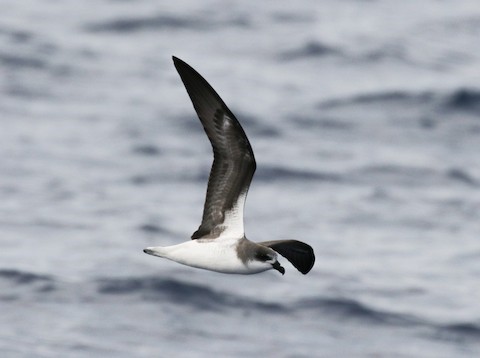Birdfinding.info ⇒ A globally rare species with a very large oceanic range. The only place where it can be seen reliably is in the waters southeast of Madeira, around its namesake Desertas Islands, during the breeding season, mainly from June to November. Otherwise, it is rarely but regularly seen on pelagic trips out of Hatteras, North Carolina—most consistently in late May and early June, then less often through summer and into September.
Desertas Petrel
Pterodroma deserta
Breeds in Madeira and disperses widely across the North and South Atlantic.

Desertas Petrel confirmed location data. © Ramos et al. 2016
Breeds from June to December in the Desertas Islands on Bugio, which is the southeasternmost island of the Madeiran Archipelago. The island is protected as a national park and also supports a colony of Mediterranean Monk Seals. In 2010, the population was estimated at between 160 and 180 pairs, most nesting on the island’s southern plateau.
Movements. Geolocator-based tracking studies of 43 birds in 2007-13 have found that this population is highly mobile. During the breeding season they forage across much of the eastern North Atlantic north to the upper latitudes of Scotland (~60° North). Most of the population apparently winters in the South Atlantic east of Brazil, Uruguay, and Argentina, from equatorial waters south to around 40° South).
Just before and after breeding, small numbers regularly move west to the shelf waters of the West Indies and eastern North America, and at least occasionally into the Gulf of Mexico.
Identification
A mid-sized gadfly petrel with gray upperparts, white underparts, and dark wings.
Effectively identical to Cape Verde Petrel—the two are often combined under the name Fea’s Petrel, either taxonomically as a single species or just for practical purposes in field identification (see below).
Their most noticeable features are a gray partial hood, or cowl, blackish eye-patches, a white throat, a pale-gray rump and tail, a dark “M” across the back and wings, and mostly dark-gray underwings with contrasting whitish patagial wedges.

Desertas Petrel, showing dark wings, medium-gray back, and pale-gray rump and taill. (Offshore from Cape Hatteras, North Carolina; August 25, 2017.) © Peter Flood
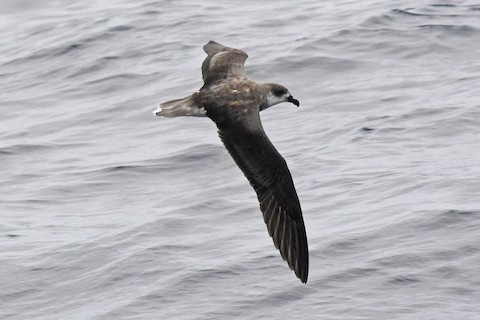
Desertas Petrel, showing dark wings, medium-gray back, and pale-gray rump and tail. (Offshore from Cape Hatteras, North Carolina; June 8, 2019.) © Troy Hibbitts

Desertas Petrel, showing contrasting dark “M” on upperparts and pale-gray rump and tail, appearing whitish in this lighting. (Offshore from Cape Hatteras, North Carolina; June 2, 2016.) © Casey Weissburg
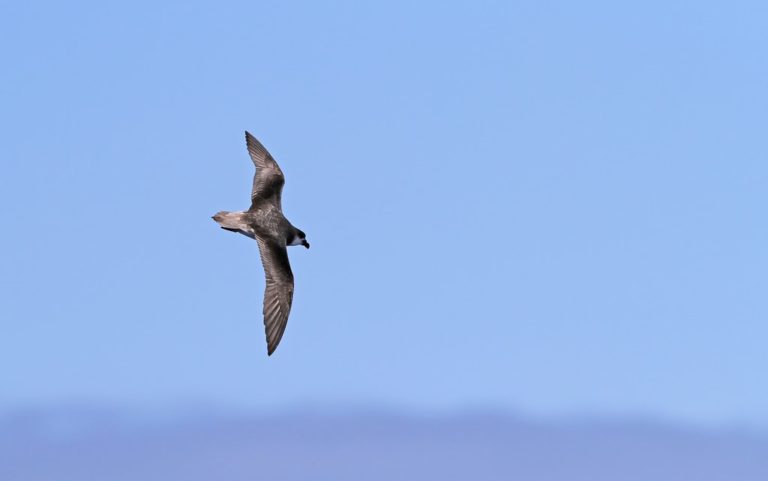
Desertas Petrel, showing contrasting dark “M” on upperparts and pale-gray rump and tail. (East of Madeira, Portugal; August 5, 2011.) © Christoph Moning
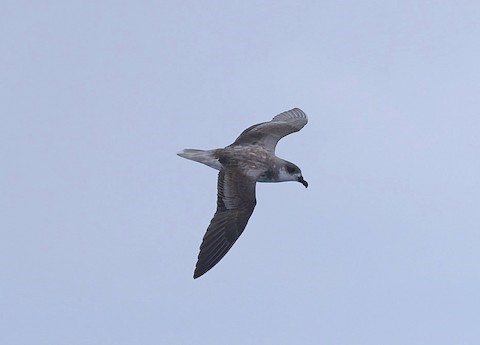
Desertas Petrel, showing dark wings, medium-gray back, and pale-gray rump and tail. (Offshore from Cape Hatteras, North Carolina; June 8, 2019.) © David Provencher
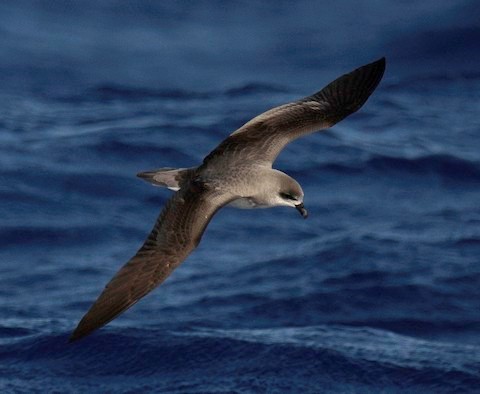
Desertas Petrel, showing contrasting dark “M” on upperparts and pale-gray rump and tail. (Offshore from Cape Hatteras, North Carolina; May 22, 2019.) © Ed Corey
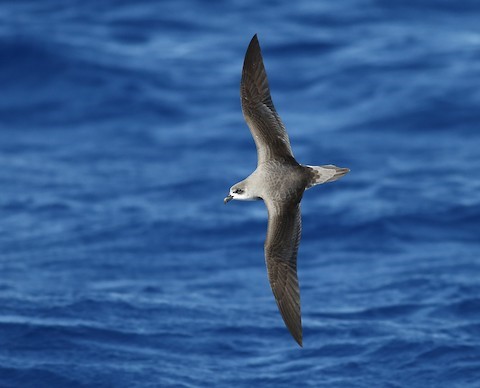
Desertas Petrel, showing contrasting dark “M” on upperparts and pale-gray rump and tail. (Offshore from Cape Hatteras, North Carolina; May 22, 2019.) © Kate Sutherland
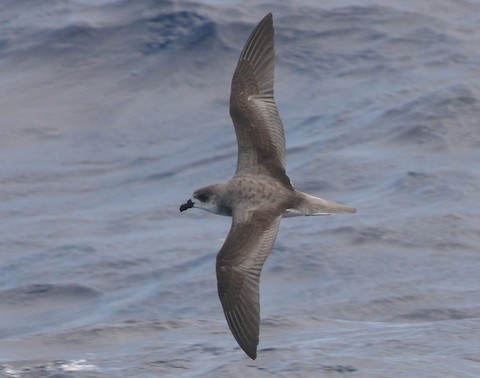
Desertas Petrel, showing contrasting dark “M” on upperparts and pale-gray rump and tail. (Offshore from Cape Hatteras, North Carolina; June 6, 2020.) © Clive Harris
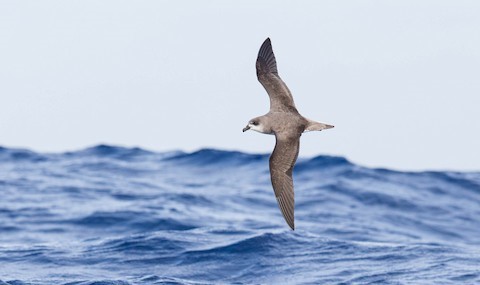
Desertas Petrel, showing contrasting dark “M” on upperparts and pale-gray rump and tail. (East of Madeira, Portugal; August 3, 2012.) © Olli Tenuovo

Desertas Petrel, showing contrasting dark “M” on upperparts and pale-gray rump and tail, appearing whitish in this lighting. (East of Madeira, Portugal; August 3, 2016.) © Eric François Roualet

Desertas Petrel, showing little contrast on upperparts except for paler-gray rump and tail. (East of Madeira, Portugal; July 3, 2018.) © Paul Chapman

Desertas Petrel, showing dark wings, medium-gray back, and pale-gray rump and tail. (Offshore from Cape Hatteras, North Carolina; June 1, 2015.) © Michael Todd

Desertas Petrel, showing mostly white face. (East of Madeira, Portugal; July 3, 2018.) © Paul Chapman

Desertas Petrel. (Offshore from Cape Hatteras, North Carolina; June 8, 2019.) © David Provencher

Desertas Petrel, with underwings appearing all-dark in this lighting. (Offshore from Cape Hatteras, North Carolina; May 22, 2019.) © Ed Corey
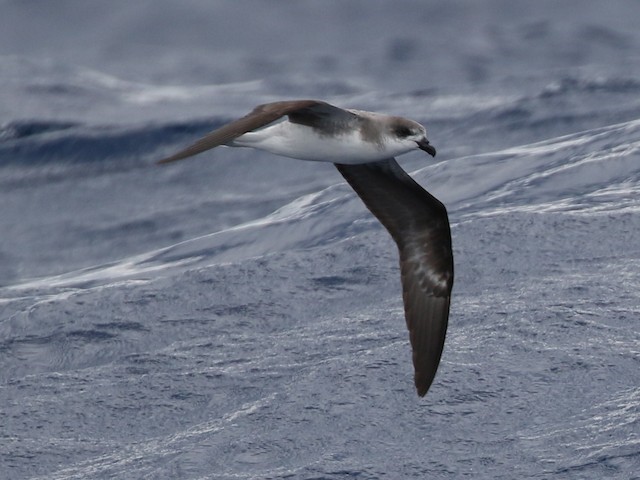
Desertas Petrel, with underwings appearing all-dark in this lighting. (Offshore from Cape Hatteras, North Carolina; August 25, 2017.) © Steve Calver
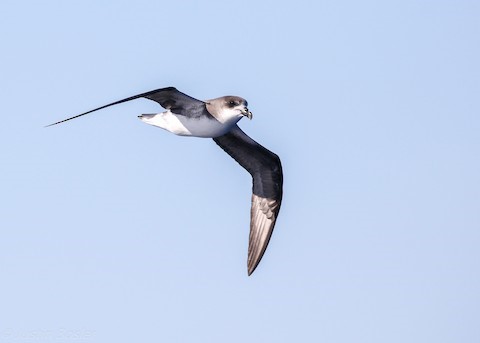
Desertas Petrel. (Offshore from Cape Hatteras, North Carolina; June 1, 2020.) © Justin Bosler
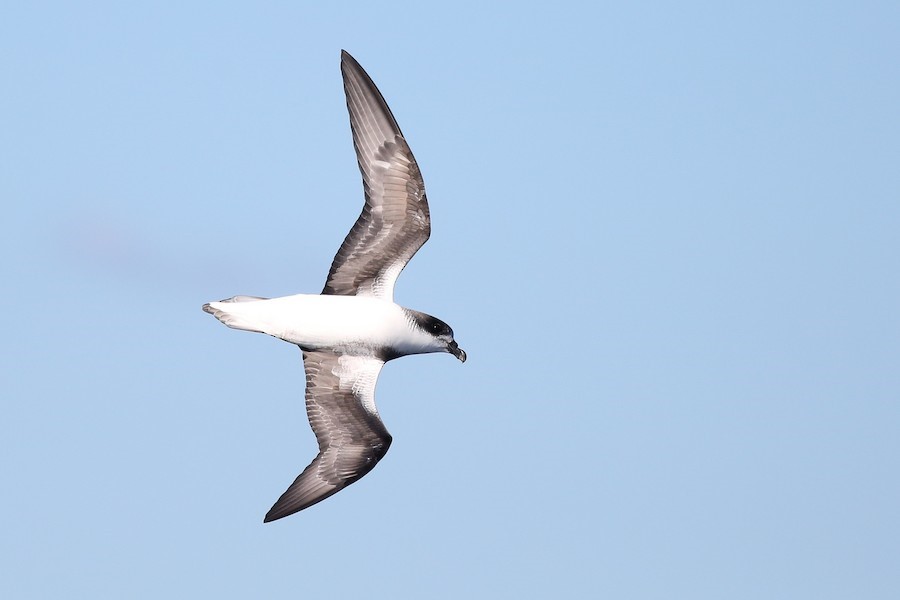
Desertas Petrel, showing mostly medium-gray underwing with blackish carpal bar, tip, and trailing edge. (Offshore from Cape Hatteras, North Carolina; June 1, 2020.) © Kate Sutherland
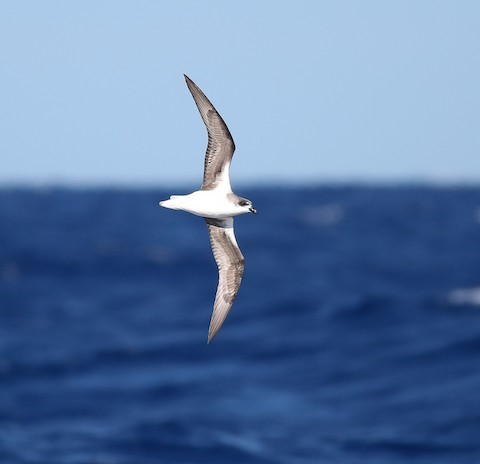
Desertas Petrel, showing mostly medium-gray underwing with blackish carpal bar, tip, and trailing edge. (Offshore from Cape Hatteras, North Carolina; May 22, 2019.) © Kate Sutherland
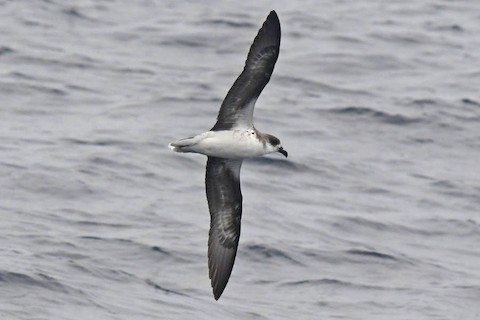
Desertas Petrel, with underwings appearing mostly dark except for whitish patagial wedge. (Offshore from Cape Hatteras, North Carolina; June 8, 2019.) © Troy Hibbitts

Desertas Petrel, with underwings appearing almost all-dark in this lighting. (Offshore from Cape Hatteras, North Carolina; August 25, 2017.) © Tom Benson
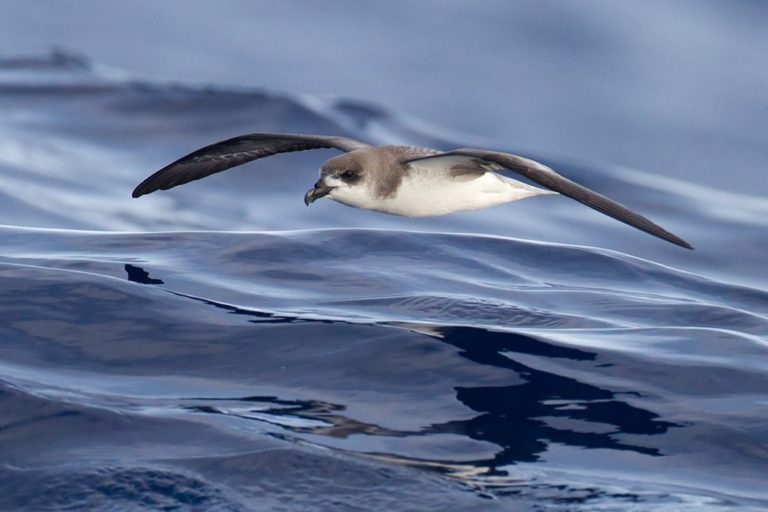
Desertas Petrel. (Madeira, Portugal; August 1, 2012.) © Jukka J. Nurmi
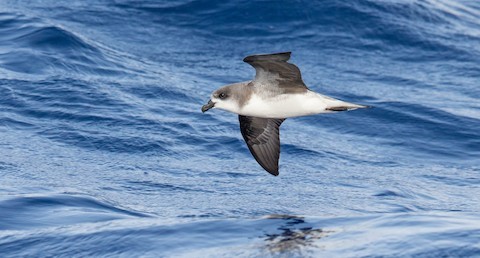
Desertas Petrel. (East of Madeira, Portugal; August 3, 2012.) © Olli Tenuovo
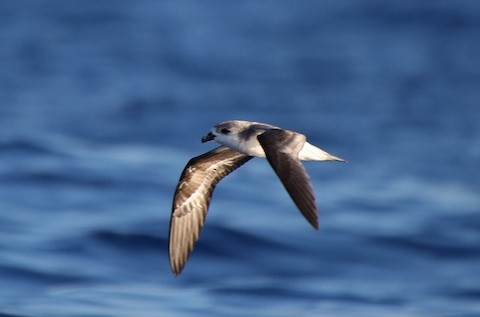
Desertas Petrel, with underwing appearing mostly pale in full illumination. (East of Madeira, Portugal; July 4, 2018.) © Paul Chapman
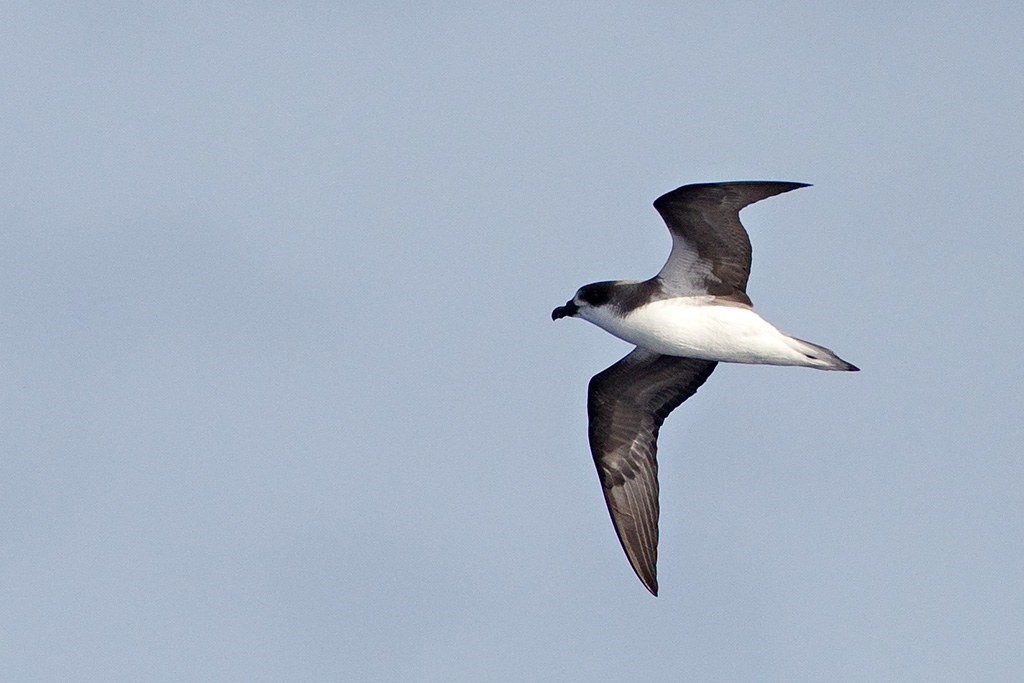
Desertas Petrel—note bill thickness. (Madeira, Portugal; August 1, 2012.) © Jukka J. Nurmi

Desertas Petrel, with underwings appearing mostly dark except for whitish patagial wedge. (Offshore from Cape Hatteras, North Carolina; August 25, 2017.) © Peter Flood
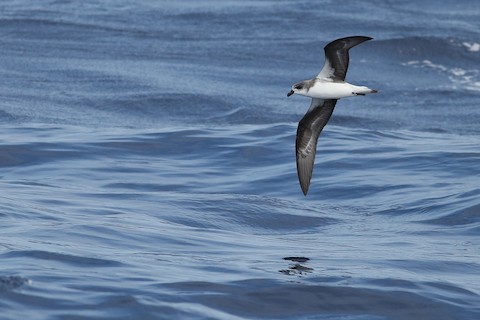
Desertas Petrel. (Offshore from Cape Hatteras, North Carolina; June 6, 2020.) © Kate Sutherland
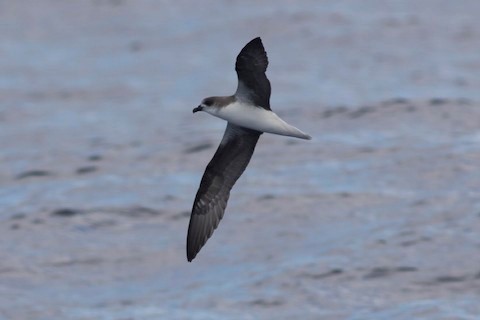
Desertas Petrel, with underwings appearing all-dark in this lighting. (Offshore from Cape Hatteras, North Carolina; June 1, 2015.) © Michael Todd
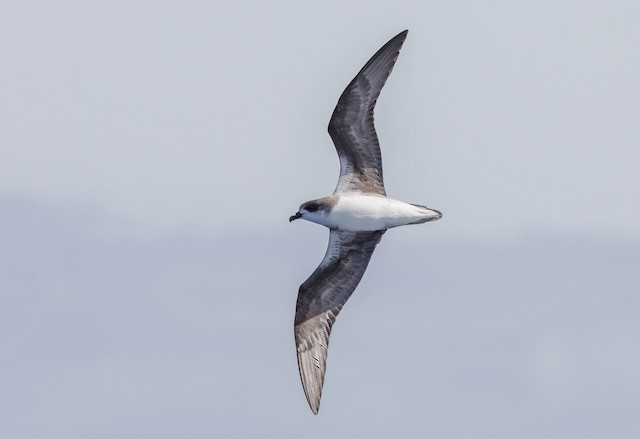
Desertas Petrel, showing mostly medium-gray underwing with blackish carpal bar. (East of Madeira, Portugal; August 2, 2012.) © Olli Tenuovo
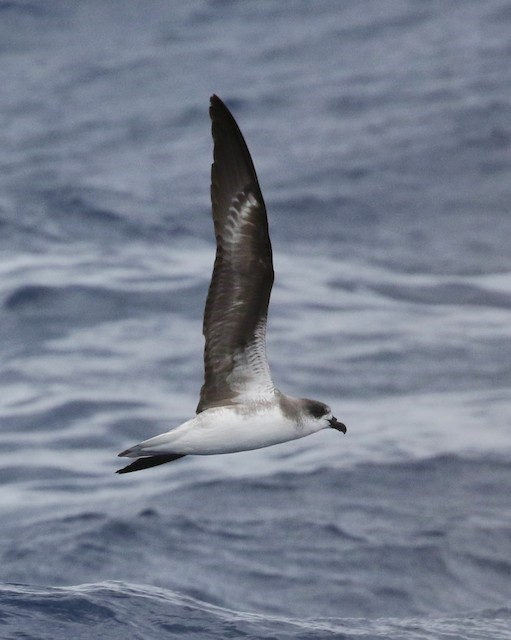
Desertas Petrel, with underwing appearing mostly dark except for whitish patagial wedge. (Offshore from Cape Hatteras, North Carolina; August 25, 2017.) © Tom Benson
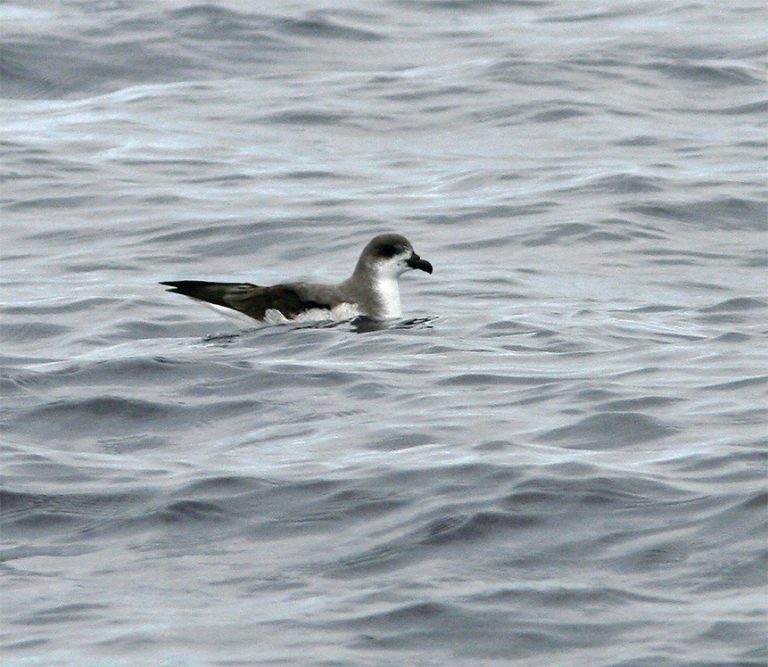
Desertas Petrel. (Desertas Islands, Madeira, Portugal; June 30, 2006.) © Killian Mullarney
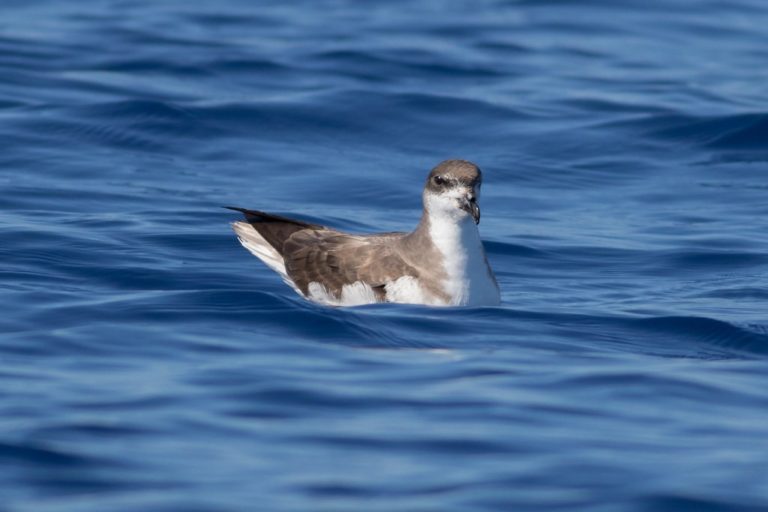
Desertas Petrel. (Madeira, Portugal; September 22, 2016.) © Jorick van Arneym
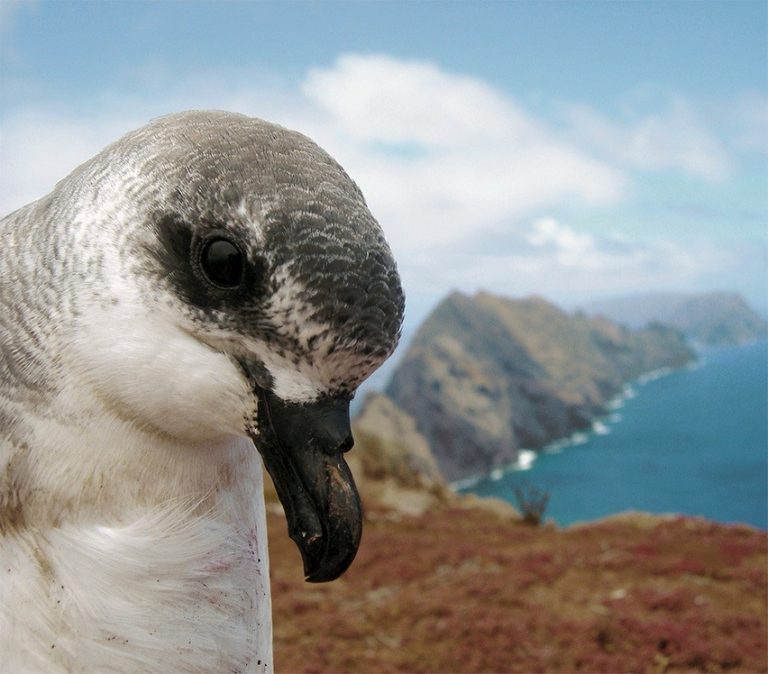
Desertas Petrel. (Bugio, Madeira; July 4, 2005.) © Filipe Viveiros
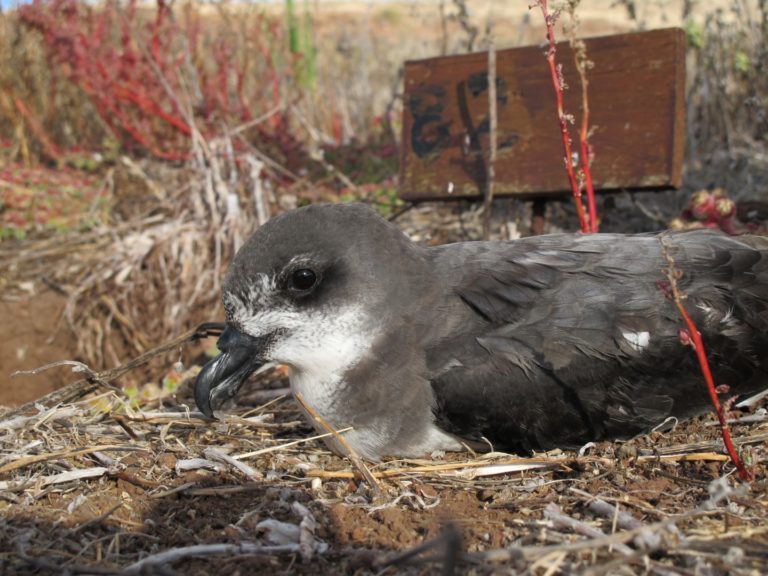
Desertas Petrel. (Bugio, Madeira.) © Ivan Ramírez

Desertas Petrel. (Bugio, Madeira.) Instituto das Florestas e Conservação da Natureza – IPRAM

Desertas Petrel. (Bugio, Madeira.) Instituto das Florestas e Conservação da Natureza – IPRAM
Cf. Cape Verde Petrel. Cape Verde and Desertas Petrels are effectively identical and have widely overlapping ranges: Desertas has a more extensive range that fully encompasses Cape Verde’s known range. Although their measurements and other features overlap, there are some differing tendencies. Desertas tends to have a heavier bill, especially its depth (vertical thickness) at the base, so Cape Verde’s bill is more evenly proportioned on average.
Cf. Zino’s Petrel. Desertas, Cape Verde, and Zino’s Petrels are very similar and have widely overlapping ranges: both Desertas and Zino’s have more extensive ranges that fully encompass Cape Verde’s known range. Most observations of individuals from this trio are at least somewhat ambiguous. Among the three, there is significant overlap in features and measurements. Nevertheless, Zino’s is often distinctive enough to identify with confidence.
Compared to Cape Verde and Desertas, Zino’s Petrel averages about 5-10% smaller in overall measurements (wingspan and total length), but 20-30% smaller in weight and bill length and depth, although it overlaps with Cape Verde at the margins. So Zino’s is slightly smaller in its outer dimensions, but proportionately slimmer and smaller-billed.
Zino’s also tends to have a paler head and more contrast on the underwings—often showing a whitish stripe down the middle of the wing (apparently never observed on Cape Verde or Desertas)—although plumage differences such as these are highly dependent on lighting and feather-wear.
Cf. Soft-plumaged Petrel. The Soft-plumaged Petrel of the southern oceans was traditionally considered conspecific with Zino’s, Desertas, and Cape Verde Petrels of the Atlantic Ocean. Desertas Petrel winters in the South Atlantic at latitudes where Soft-plumaged is very common, so they apparently overlap broadly, and Soft-plumaged was recently photographed in Norwegian waters, so it clearly has the potential to occur throughout the ranges of Zino’s, Desertas, and Cape Verde.
Soft-plumaged differs from the others in two principal features. First, soft-plumaged usually has a complete gray collar at the base of its throat, whereas the others have a gray cowl that rarely extends far down the sides of the neck. Second, on Soft-plumaged the rump and tail are approximately the same shade of gray as the upper back, whereas on the others the rump and tail are much paler.
In addition, Soft-plumaged usually has a mostly white forehead, whereas the others usually have gray foreheads—but forehead color seems to vary within each species to some extent. Finally, Soft-plumaged typically shows more extensive white or plae-gray on the underwings, usually extending to the bases of the primaries. In this respect, Zino’s can be similar, but usually has a whitish stripe limited to the coverts. Desertas and Cape Verde are more consistently dark-gray over the majority of the underwing.
Notes
Monotypic species—or form, as it is often considered conspecific with Cape Verde Petrel (P. feae), together comprising Fea’s Petrel (P. feae).
The internal taxonomy of this group remains unsettled. Fea’s Petrel was traditionally considered conspecific with Zino’s Petrel (P. madeira), collectively known as Fea’s Petrel (P. feae), which itself was previously regarded as a subspecies of Soft-plumaged Petrel (P. mollis). The subdivision of Soft-plumaged into at least three species is universally accepted. Since approximately 2010, the emerging consensus among Macaronesian seabird experts has been to take the further step of recognizing Cape Verde and Desertas Petrels as separate species, but this split remains controversial, at least in part because these two forms (unlike madeira and mollis) are not known to be distinguishable in the field. Consequently, Howell and Zufelt (2019) refer to these two forms as cryptic species that are separate in theory but in practice best considered a single species: Fea’s Petrel (P. feae).
IUCN Red List Status: Vulnerable.
References
Alderfer, J., and J.L. Dunn. 2014. National Geographic Complete Birds of North America (Second Edition). National Geographic Society, Washington, D.C.
BirdLife International. 2018. Pterodroma deserta. The IUCN Red List of Threatened Species 2018: e.T22736135A132665941. https://dx.doi.org/10.2305/IUCN.UK.2018-2.RLTS.T22736135A132665941.en. (Accessed October 6, 2020.)
eBird. 2020. eBird: An online database of bird distribution and abundance. Cornell Lab of Ornithology, Ithaca, N.Y. http://www.ebird.org. (Accessed October 6, 2020.)
Garcia-del-Rey, E. 2011. Field Guide to the Birds of Macaronesia: Azores, Madeira, Canary Islands, Cape Verde. Lynx Editions, Barcelona.
Garcia-del-Rey, E. 2018. Birds of the Canary Islands. Christopher Helm, London.
Harrison, P. 1983. Seabirds: An Identification Guide. Houghton Mifflin, Boston.
Howell, S.N.G. 2012. Petrels, Albatrosses & Storm-Petrels of North America: A Photographic Guide. Princeton University Press, Princeton, N.J.
Howell, S.N.G., and K. Zufelt. 2019. Oceanic Birds of the World. Princeton University Press.
Ramos, R., I. Ramírez, V.H. Paiva, T. Militão, M, Biscoito, D. Menezes, R.A. Phillips, F. Zino, and J. González-Solís. 2016. Global spatial ecology of three closely-related gadfly petrels. Scientific Reports 6:23447. https://dx.doi.org/10.1038%2Fsrep23447.
The Sound Approach. 2019. Desertas Petrel, Pterodroma deserta. https://soundapproach.co.uk/species/desertas-petrel/.
Xeno-Canto. 2020. Desertas Petrel – Pterodroma deserta. https://www.xeno-canto.org/species/Pterodroma-deserta. (Accessed October 6, 2020.)
